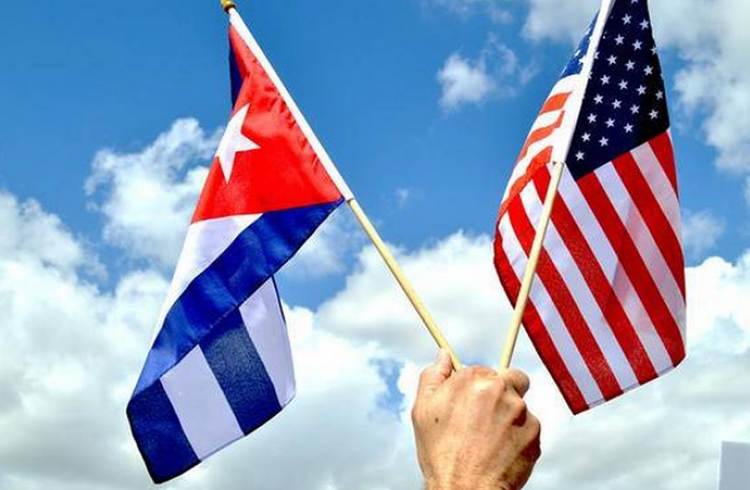Many analysts are making projections and predictions about what Cuba’s future will be after the embargo is lifted; others are analyzing the impact on the United States—especially Florida—of a new market of 11 million people. A number of studies have been made on both those issues, but I will just analyze a few figures.
Professor Jim Linch of the Florida State University Center for Economic Forecasting says that Cuba needs $500 million for investing in telecommunications; $500 million for road infrastructure; $575 million for aviation and airports; and $540 million for rail transport. At first glance, in a hypothetical scenario without the embargo and where U.S. banks would be willing to finance these investments, a clear advantage exists for companies that want to and can undertake such projects. Because of its geographical proximity, the state of Florida would logically account for most of this.
All studies on the economic impact of lifting the embargo are based on hypotheses; it is very difficult to predict what would happen, because all signs seem to indicate that the embargo will be dismantled little by little. For its part, Cuba will have to adapt to these new conditions as well.
To continue analyzing hypothetically based on realistic criteria, it would be good to consider real data from countries that have normal relations with the United States and which have geographic conditions similar to Cuba’s. Let’s take the Dominican Republic, for example: in 2014, this country received almost five million tourists, and one-third of them were from the United States. Between the state of Florida and the Dominican Republic, according to data from the State Chamber of Commerce, there is more than $5 billion in trade. Taking those figures into account, it is very likely that in a scenario where the embargo does not exist, Cuba and Florida would be very close to those numbers. Some experts venture to say that given those conditions, some 30,000 new jobs would be created in Florida.
In any case, some sectors of Florida’s economy would benefit immediately if the embargo were lifted—the transport industry, for example. Just imagine if Cuba were to enter the dynamic of the international market, based on Florida ports and interaction with the Mariel Development Zone. Three major maritime ports exist in Florida: Miami, the most important point for commerce between Latin America and the United States; Tampa, the Gulf of Mexico port closest to western Cuba; and Jacksonville, one of Europe’s ports of entry to the United States. Most analysts agree that Cuban tobacco and rum could occupy a fundamental place in U.S. consumption; we could also suppose that Florida companies would distribute those products. Recently there was talk of ferries operating between Florida and Cuba, and in conditions of normal relations, they would be a very effective mode of transport between the two coasts.
On Dec. 17th itself, the newspaper Tampa Bay reported that various local companies saw a clear opportunity for exporting agricultural equipment, fertilizer, irrigation equipment, construction materials, and other goods to Cuba.
It is evident that through normal exchange between the two countries, major benefits would be generated for both sides. After having carried out this theoretical exercise, it would be good to dream of a possible scenario, one that approaches the aspiration of most Cubans.
While many economic difficulties exist in Cuba, it is up to authorities to establish rules for regulating financial and commercial exchange between the two countries. To be optimistic, for example, U.S. and Cuban companies could carry out joint oil prospecting in the Gulf of Mexico, fairly sharing the benefits and responsibilities.
Cuban and U.S. doctors could work as a team to fight epidemics and tropical diseases, and earn the same salaries.
Cuba could import high-technology equipment for its telecommunications sector, paying with medicine and biotechnology products such as Heberprot P, which is so needed by diabetics in the United States.
Cruise companies and Cuban hotel companies could draw up contracts and work with millions of tourists who would enjoy the island’s natural beauties.
Likewise, it would be very advantageous for everybody if Cuba and the United States had contracts for cooperating in areas such as the fight against the trafficking of drugs and human beings, environmental protection, and dealing with natural disasters.
If the embargo did not exist, Cuban and U.S. college students could study for master’s degrees in each other’s universities.
It was recently announced that a tractor manufacturing company was interested in establishing itself in the Mariel Development Zone; the ideal thing would be to meet Cuba’s domestic demand and also export any surplus from that production.
A normal scenario would assume two-way trade, where Cuban products are consumed in the United States and U.S. products are consumed in Cuba.
So if the embargo is lifted, we would be talking not only about economic impact, but also about human development, quality of life, and social benefits, on both sides of the Strait.












Wishful thinking! It’s free, anyway….
“When” the embargo is lifted….